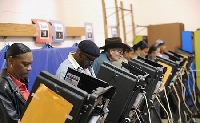What is National Voter Registration Act
By Catalogs Editorial Staff

Everyone of voting age should understand what the National Voter Registration is
In case you haven?t noticed, it?s a presidential election year.
If you?re an American citizen over the age of 18, you have the right to cast a vote for the candidates and issues of your choice. That is, provided you have registered to vote.
This practice was implemented in the early 1800s as a way to insure that non-citizens could not vote. Unfortunately it was often inconvenient for many people to register, like the elderly or those without access to public transportation. Moreover, many states and political parties used these laws as a way to prevent minorities or groups that tended to vote for their opposition from going to the polls.
This was seen as a major reason for a decline in voter turnout since the early 1900s.
~
In the 1980s, a voter registration movement began with the goal of making registration easier or almost automatic. Instead of having to make a special trip to register, data would be collected when a person obtained or renewed a driver?s license at the motor vehicles bureau, an activity most Americans do anyway.
Data would also be collected when a person applied for government aid such as food stamps or disability services. Finally, mail-in registration would be made easier for those who were unable to register any other way.
The movement reached success on May 20th, 1993, when President Bill Clinton signed the National Voter Registration Act of 1993.
The act required states to provide the means to register at driver?s license locations as well as at voter registration agencies and to set up the means for mail-in registration. This link between driver?s licenses and voter registration led the bill to be called the ?Motor Voter? act. States were ordered to requite first-time voters to vote in-person unless they have extenuating circumstances preventing it.
The act implemented procedures to prevent states from dropping a voter?s registration if they moved or failed to vote. It also required that states appoint a chief election official. That official?s job includes receiving notice of all felony convictions in order to prevent convicted felons from voting, a restriction that has since been removed in all states but Kentucky and Virginia. The chief election official is also responsible for creating penalties for anyone who tries to interfere with registrations or voting.
The National Voter Registration Act of 1993 achieved its goal of making voter registration easier almost immediately. In the first quarter of 1995, the year the act was implemented, two million new voters were registered.
Since then voter registration and voter participation has risen. Voters can now register at places like public libraries and Medicaid agencies. Postcards for mail registration can be picked up at many colleges, libraries and government agencies. Applications can also be started online.
The right to vote is one of our most cherished rights as American citizens. It is our duty to participate in our government through voting and restrictions to that process should be limited. The National Voter Registration Act of 1993 has done much to make that happen.
Popular Savings Offers




.jpg)






.png)